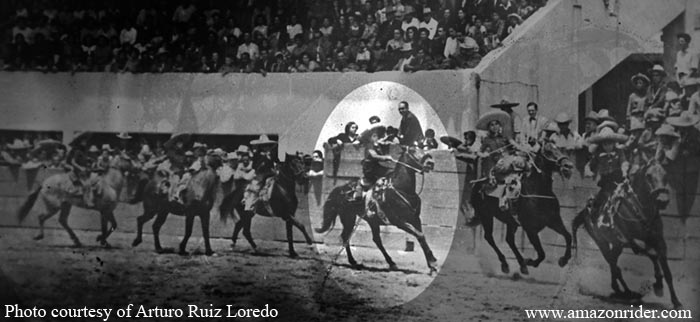 |
| This photo was taken in October of 1953 at the Rancho del Charro, today's National Charro Association, in Mexico City. |
Maria Eugenia Ruiz Loredo is one of the first "amazonas" to ever ride in an escaramuza team. Alongside her sister Graciela and brother Arturo, she learned basic horse riding skills in a class with three other kids from the Camacho Elorriaga family at the Rancho del Charro in Mexico City.
The kids' parents decided to show off their choreographed exercises during a
break at a "charreada," or Mexican rodeo. That was in 1953. The crowd
loved it and the escaramuza was born. Today escaramuza teams are made up
of exclusively female riders, who earned their place as athletes within the tradition of charreria
in 1991 when their sport was declared an official charreria sport by
Mexico's Charro Federation.
 |
| Maria Eugenia Ruiz Loredo rides on the first escaramuza team in 1953 at the Rancho Charro in 1953. |
Below is a video of historic photographs of the first escaramuzas, with an
interview by one of the other girls on the team, Guadalupe "Coco" Camacho.










